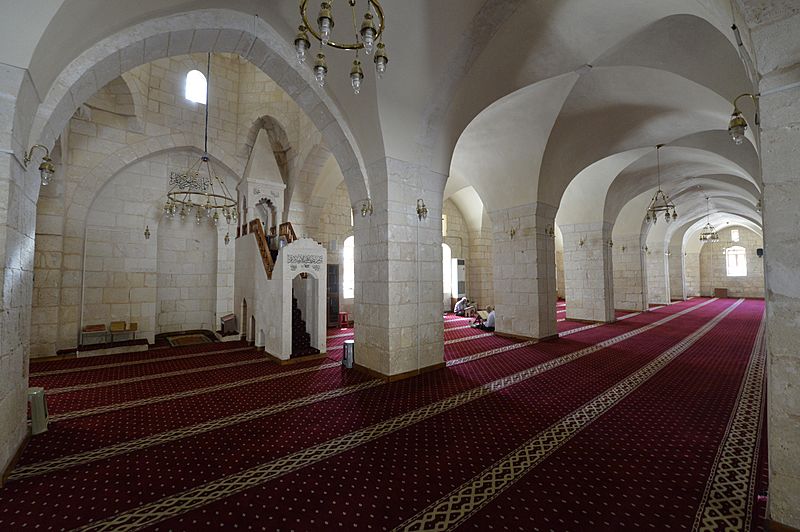Image: Urfa Ulu Camii interior 3253

Description: So as not to complicate matters I use the same text (translated and edited from a website about town) for all pictures. The names of the pictures should help identify what’s what. Some, such as those of the minaret, are taken from various spots, some outside the precinct. The Ulu Camii or Great Mosque is located on Divanyolu Street in the city center. It was built on the site of an old church called "Kızıl Kilise", whose construction date cannot be determined. The courtyard walls, columns, column capitals and bell tower of the old building still exist. There is no construction inscription of the mosque. Therefore, it is not known exactly by whom and when it was made. It is estimated that it was built by the Zengids in 1170-1175. According to the inscriptions, the Great Mosque; It was repaired in 1684, 1779, 1780 and 1870. After the Islamic conquests, it was named "Mescid ul-Hamra (Red Masjid)" because of the red marbles used in the columns and its relationship with the church. The narthex (son cemaat yeri, the place where latecomers can pray without entering the mosque proper), which sits on piers and opens to the courtyard with fourteen pointed arches, each of which is covered with cross vaults, is the first such construction in Anatolia. There is a well in the sanctuary of the mosque. According to a popular belief, a handkerchief that Jesus sent to King Abgar with his Apostle Thomas was left in this well. For this reason, the water of the well inside the mosque is considered medicinal. The minaret was transformed into a clock tower by adding a clock during the Republic period. The northwestern part of the mosque courtyard, which is surrounded by thick walls belonging to the Red Church, is a cemetery. In the mausoleum in this cemetery, there is the grave of Şehabeddin Ahmet, the younger son of Mevlana Halid Ziyâeddin, the founder of the Halidi Sect, who died in 1823. The tomb was restored by the Şanlıurfa Culture, Education, Art and Research Foundation (ŞURKAV). The mosque was repaired by the General Directorate of Foundations in 2010-2011. Source: "The Land of Culture and Beliefs Şanlıurfa" Şanlıurfa Governorship Provincial Directorate of Culture and Tourism Publications City Library Series:26
Title: Urfa Ulu Camii interior 3253
Credit: Own work
Author: Dosseman
Usage Terms: Creative Commons Attribution-Share Alike 4.0
License: CC BY-SA 4.0
License Link: https://creativecommons.org/licenses/by-sa/4.0
Attribution Required?: Yes
Image usage
The following page links to this image:

